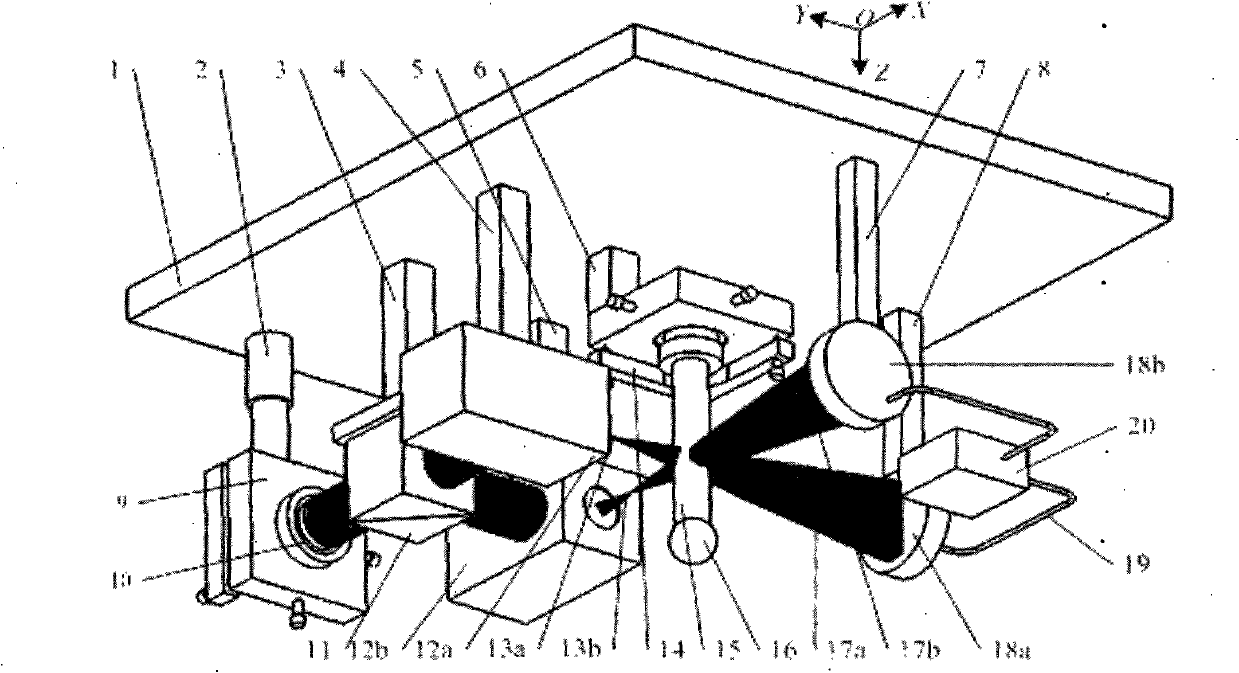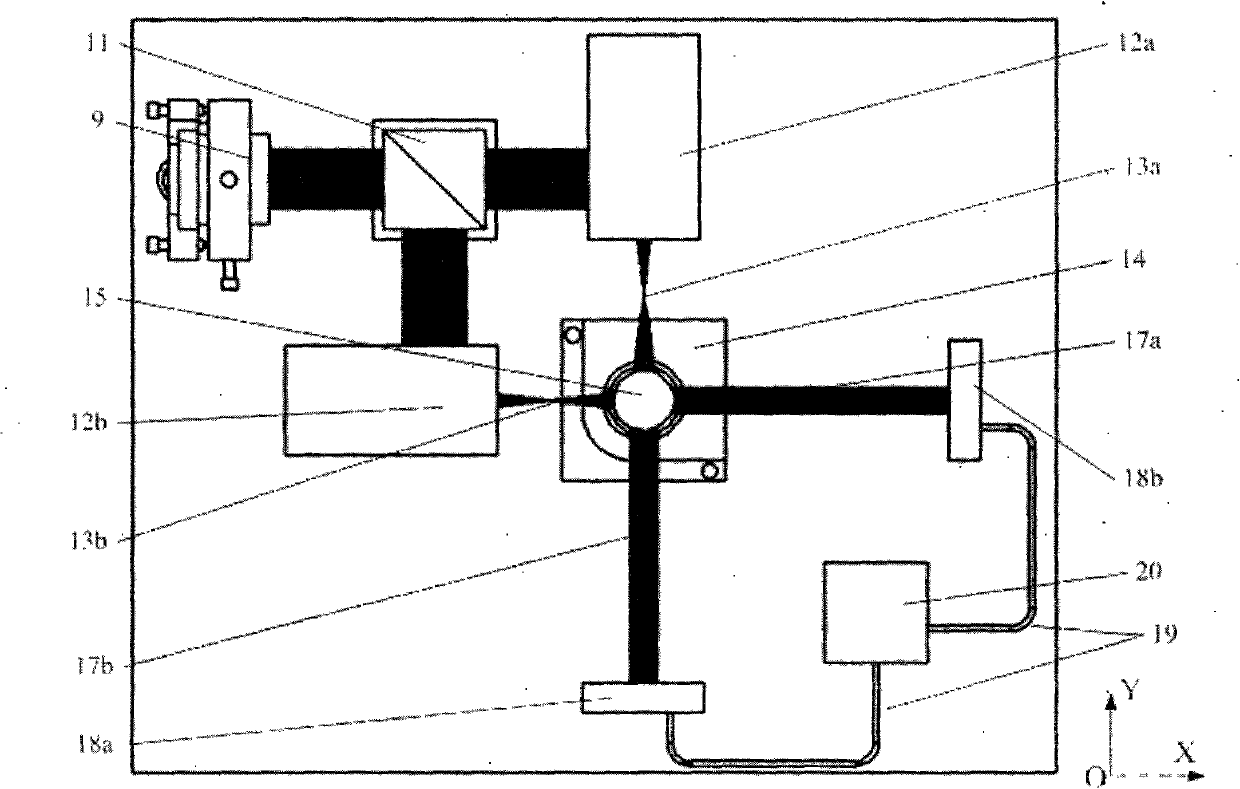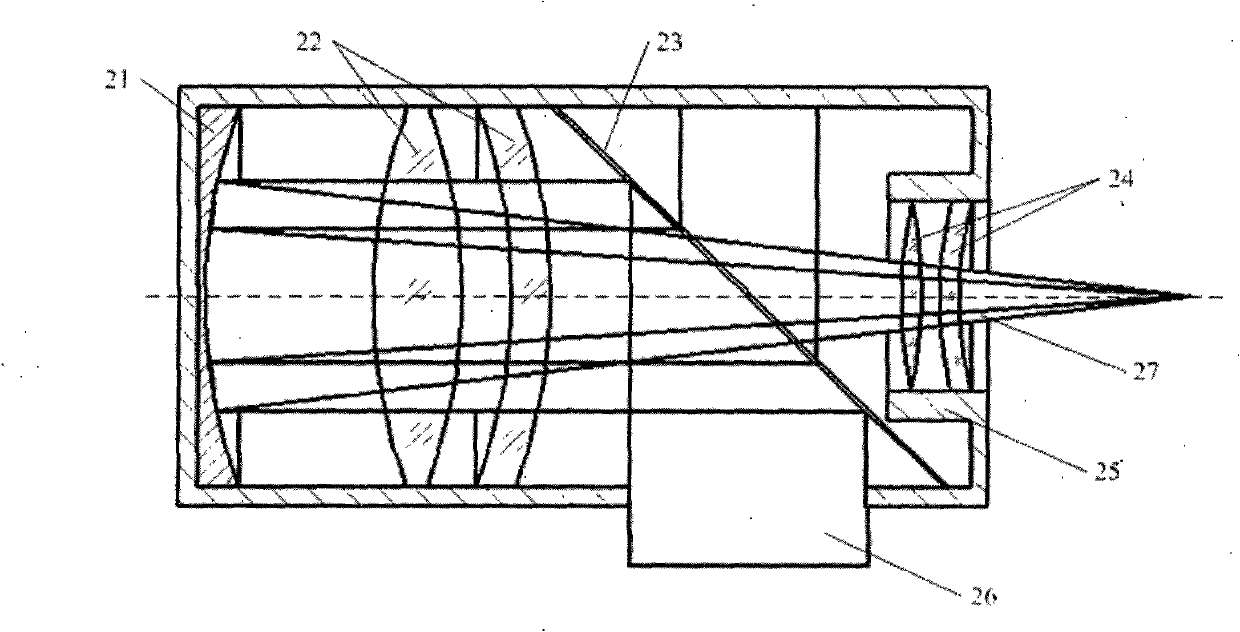Orthogonal light path two-dimensional micro-focus collimation and three-dimensional coordinate sensor
A technology of three-dimensional coordinates and sensors, which is applied in the field of sensors, can solve the problems of increased data volume, low primary magnification, and difficulty in achieving synchronization of small inner cavity sizes, and achieve the effect of long working distance and large working space
- Summary
- Abstract
- Description
- Claims
- Application Information
AI Technical Summary
Problems solved by technology
Method used
Image
Examples
Embodiment Construction
[0033] The embodiments of the present invention will be described in detail below with reference to the accompanying drawings.
[0034] An orthogonal optical path two-dimensional micro-focus collimator and three-dimensional coordinate sensor. The first connecting frame 2, the second connecting frame 3, the third connecting frame 4, the fourth connecting frame 5, and the fifth connecting frame are installed on the assembly table 1. 6. The sixth connecting frame 7 and the seventh connecting frame 8, four-dimensional adjustment frame 9, beam splitter 11, reflex telephoto system A12a, reflex telephoto system B12b, five-dimensional adjustment frame 14, photoelectric receiver B18b, The photoelectric receiver A18a is respectively assembled on the first connection frame 2, the second connection frame 3, the third connection frame 4, the fourth connection frame 5, the fifth connection frame 6, the sixth connection frame 7 and the seventh connection frame 8. The laser light source 10 is as...
PUM
 Login to View More
Login to View More Abstract
Description
Claims
Application Information
 Login to View More
Login to View More - R&D
- Intellectual Property
- Life Sciences
- Materials
- Tech Scout
- Unparalleled Data Quality
- Higher Quality Content
- 60% Fewer Hallucinations
Browse by: Latest US Patents, China's latest patents, Technical Efficacy Thesaurus, Application Domain, Technology Topic, Popular Technical Reports.
© 2025 PatSnap. All rights reserved.Legal|Privacy policy|Modern Slavery Act Transparency Statement|Sitemap|About US| Contact US: help@patsnap.com



